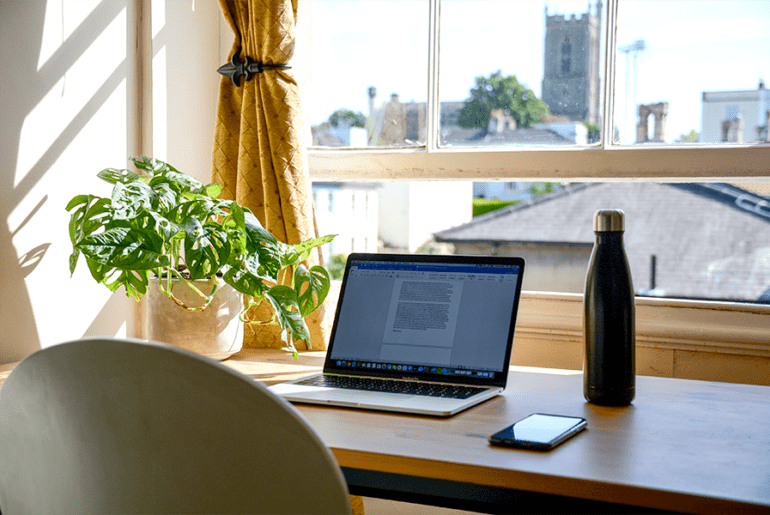While there have been mixed reviews of what many deemed a global work from home experiment, it seems there’s no going back to the pre-pandemic norm of full-time in-office work for all employees. Instead, most organizations will need to evolve blended virtual and physical workplace strategies.
So, what does it mean to leverage long-term teleworking? And how will a distributed team transform your workplace ecosystem?
PLASTARC convened workplace experts from Netflix, the International WELL Building Institute, EcoAmmo, and Stok to answer these critical questions. The short of it: this won’t be a small change in your HR manual. Here are three things your organization needs to get right to succeed in supporting a hybrid workforce.
#1: VALUE YOUR DIFFERENCES
For the majority of the history of the office, we’ve tried to make people work the same way in the same place. Yes, designers have recently explored creating neurodiverse environments that satisfy a more diverse set of human space needs, but they all remained in the same office setting.
This is an opportunity to value your differences. Studies have shown a range of responses to work from home mandates based on personal preferences and circumstances at home. Organizations who celebrate these differences in their workforce and provide flexible workplace options will rise above those that stick to more rigid pre-pandemic norms of office work.
This will require a difficult shift in mindset to valuing employee experience equitably instead of equally; what works best for one employee may be a nightmare for another, and organizations should strive to find solutions that allow all team members to work most productively and comfortably depending on their individual wants and needs.
As organizations create flexible work options for their teams, employers must ensure that no matter which option a team member chooses, they feel equitably supported and engaged. If working from home is advertised as an option but employees that work in the office receive greater benefits from coming to the physical workplace, remote work may feel like a lesser option, or even a punishment. To avoid this pitfall, organizations must ask themselves, “Do we really value our differences? How can we prove it?”
#2: EMBRACE TRANSPARENCY
In a hybrid workforce, many employees will be given the opportunity to decide what works best for them, but if your organization doesn’t support a culture of transparency, team members may not feel comfortable being honest with their decision.
Ask yourself, “Have we created a corporate culture where people can tell their managers they enjoy working from home even if they know their managers prefer working from the office?” Teams will likely default to what their leaders do if they don’t feel they have the freedom to make the choice themselves.
In many ways, the pandemic has been an accelerator, not a disruptor. This is a gut check for your corporate culture. Organizations will quickly find out if their corporate culture devalues trust and transparency and will consequently find themselves unable to fully transition to a successfully hybridized workforce.
Building trust and autonomy into your company culture will allow your workforce to opt into the situation that suits each person best, in turn delivering results to your bottom line.
#3: SUPPORT EMPLOYEE WELLNESS
Many of our clients have created beautiful, highly productive, and collaborative workspaces that put their occupants at the center of design. Now that office workers are at home, it’s imperative that these organizations continue to support their employees’ wellness beyond the walls of the workplace.
From a physical health perspective, the switch to the home office (which can be roughly translated to “bed” or “couch plus coffee table” for too many) can be a jarring transition from the ergonomics of an HQ workplace. Laptops are a great tool for travel, but humans aren’t built to use them as their sole tool for work and beyond. Helping employees with ergonomic at-home setups will protect them against negative long-term physical health impacts that may also decrease their productivity.
Maybe even more important is mental health. There are countless factors outside the role of the workplace that your team members are juggling every time they log on to their laptops. Supporting team member mental health by asking what their individual circumstances are (i.e. working parents, roommates, no air conditioning, spotty WiFi) will allow you to better meet the diverse needs of your workforce and ensure their wellness, comfort, and productivity at home. This is no easy task, and needs may shift as rapidly as the news, forcing frequent changes to keep your workforce engaged. But there are small steps to start with—beginning a meeting with something as simple as a brief wellness check-in can have profound positive impact on company culture.
A shift to a hybrid workforce is a deep investment in your organization’s culture and the long-term engagement and retention of your team members. When you value people, there is a huge return, and if your leadership misses this critical workforce evolution, you may lose talent to better-positioned organizations.
To learn more about considerations for hybridized workforces, check out the Workwell Coalition and its menu of services, as well as how organizations are continuing to address corporate emissions as they plan for an increased remote workforce. As always, reach out with questions or comments—we’d love to discuss the future of work with you.



